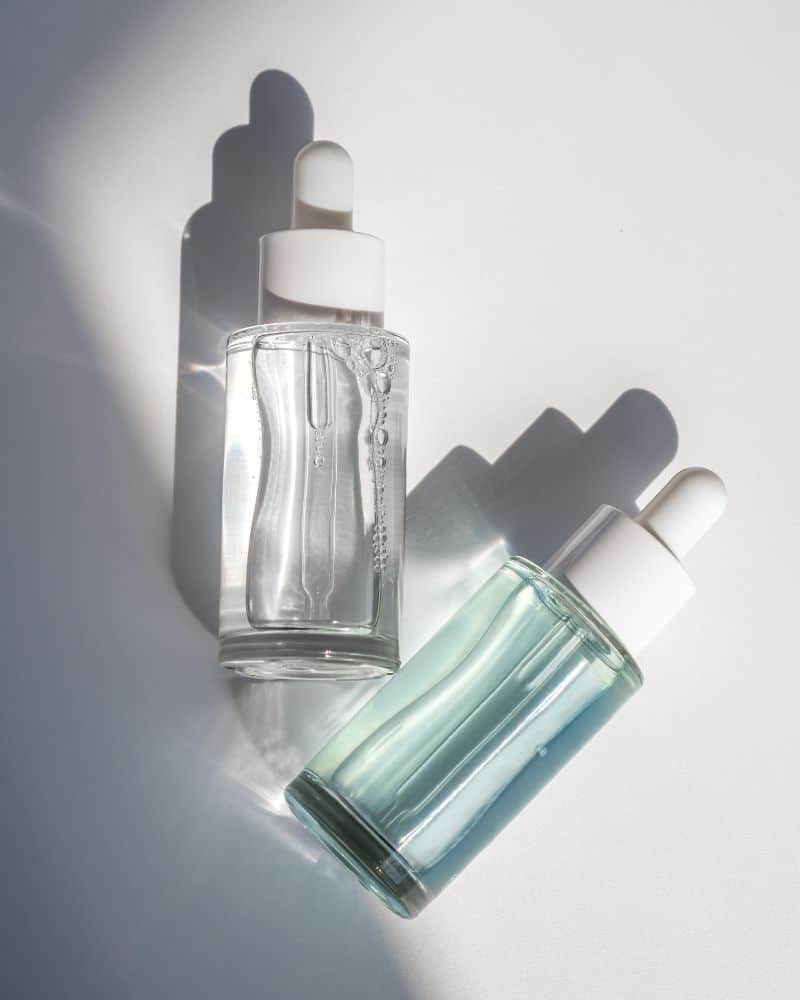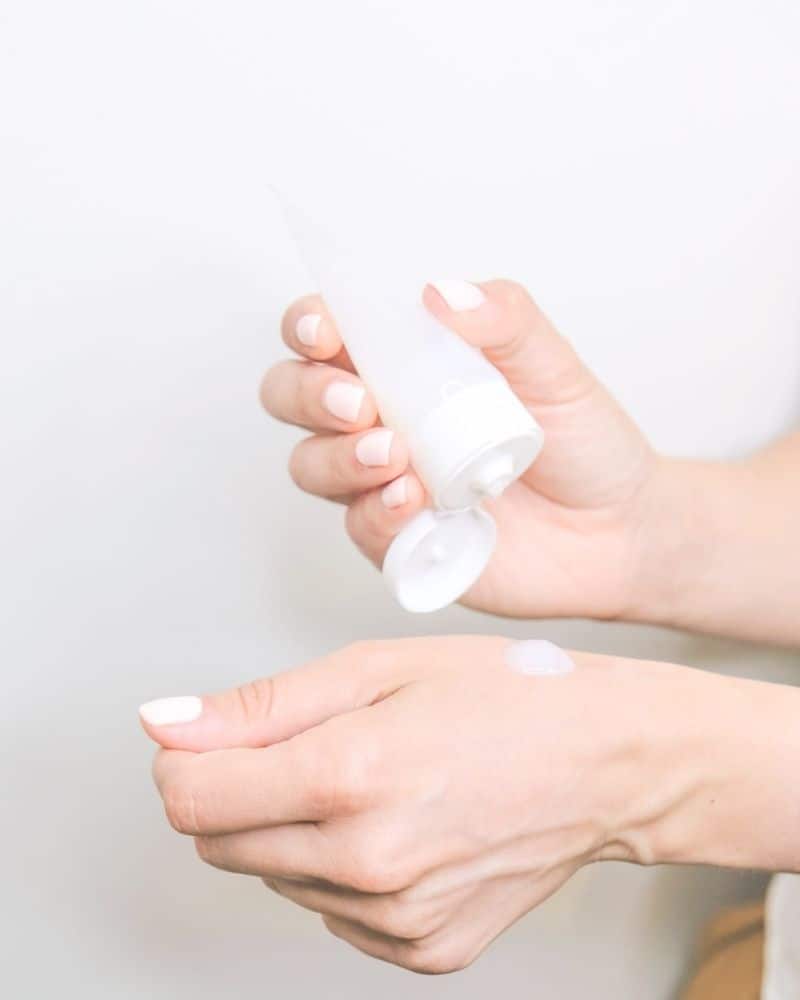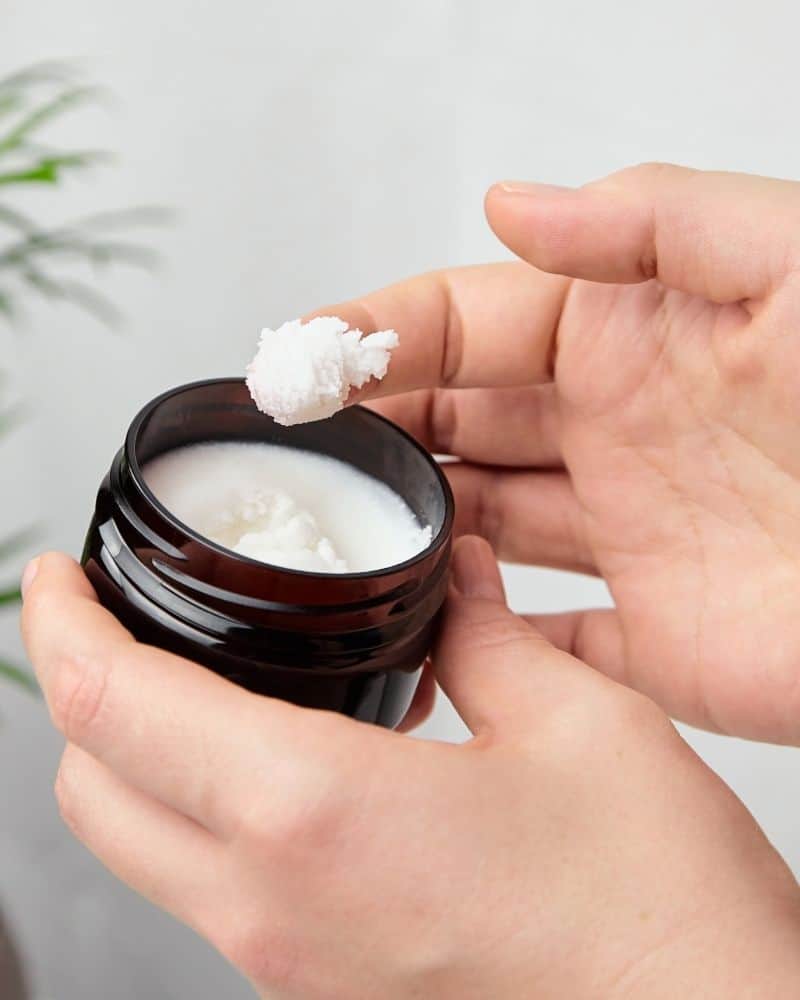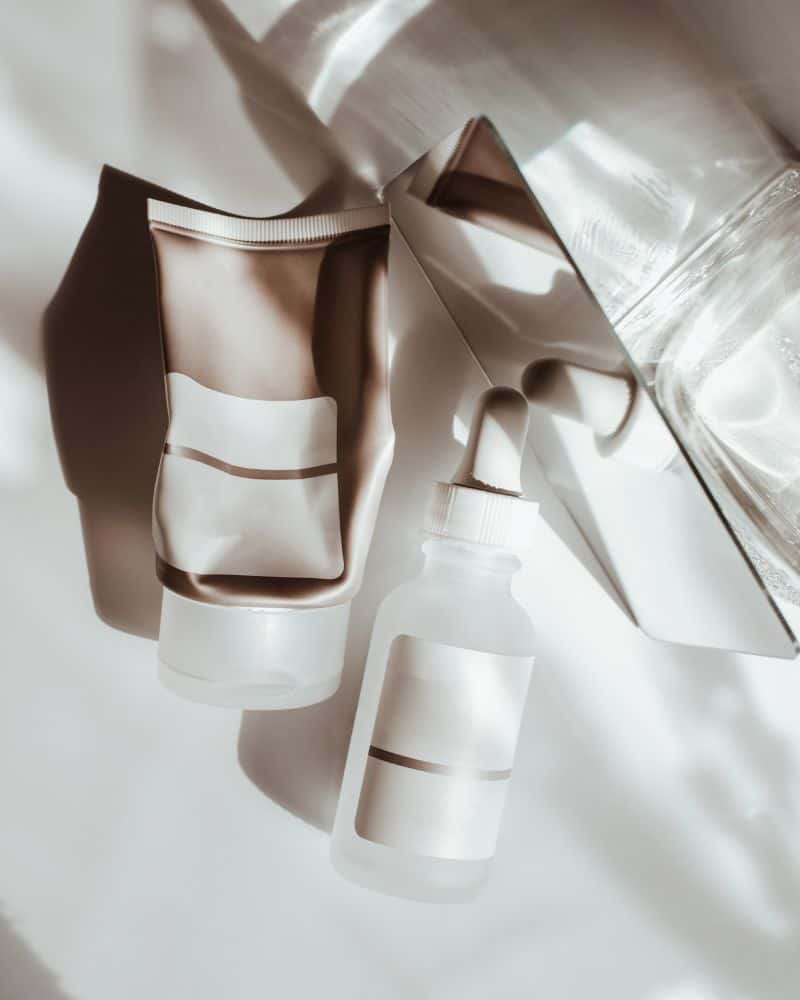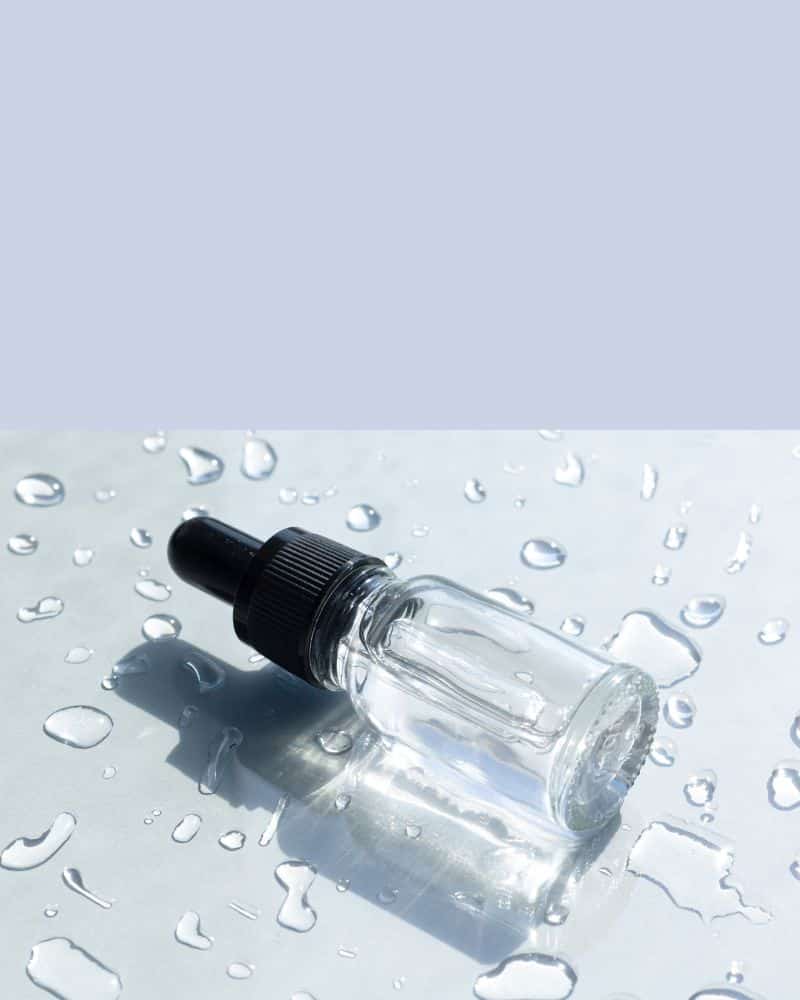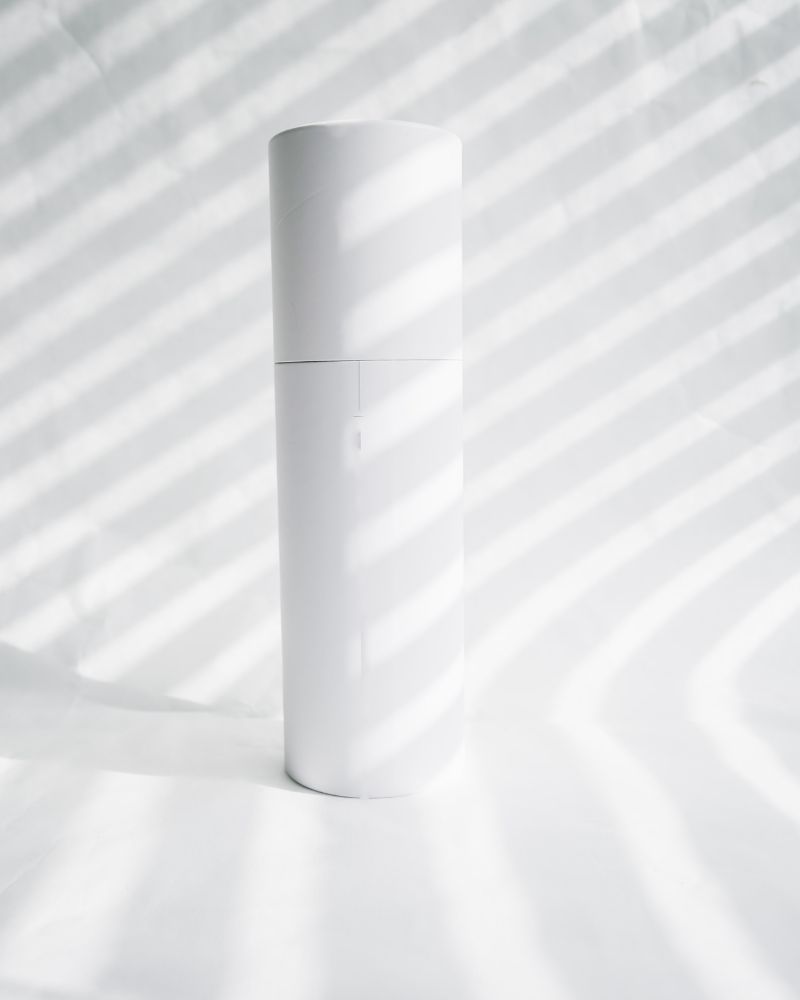Does Shea Butter Clog Pores? Here’s The Truth
This post may contain affiliate links.
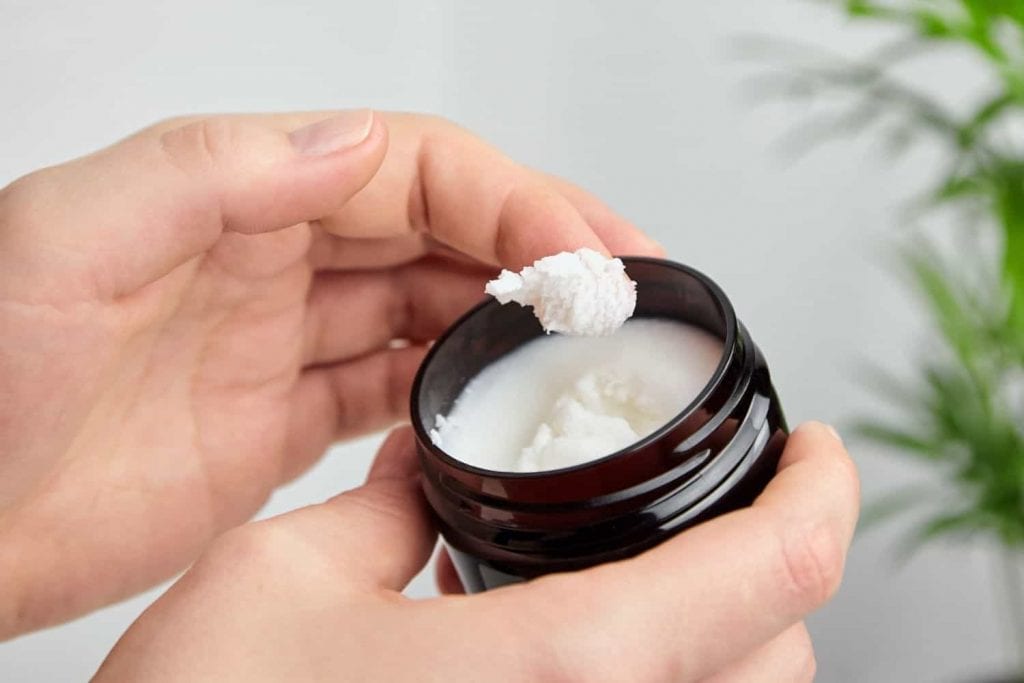
Is Shea Butter Comedogenic?
Shea butter is one of the most popular skincare ingredients because of its moisturizing and nourishing properties. It can be found in body lotions, washes, facial moisturizers and masks. But many people with oily and acne-prone skin are wary of anything with ‘butter’ in the name. In this post we’ll answer the question “does shea butter clog pores?” and take a look at the comedogenicity of shea butter.
What Is Shea Butter?
Butyrospermum parkii butter, or Shea butter, is a skin care ingredient that is obtained from the kernels of the fruit of the Shea tree which is native to West Africa. It has been used for centuries as a moisturizer that has many benefits such as aiding with wounds, burns, stretch marks and other scars.
Shea butter is extremely effective due to its high concentration of fatty acids, vitamins and antioxidants. These properties make shea butter nourishing, moisturizing and healing.
Benefits Of Shea Butter For The Skin
- Moisturizing: shea butter is rich in fatty acids which help to keep skin moisturized while strengthening the skin’s protective moisture barrier. Fatty acids can also help with skin healing and anti-aging.
- Nourishing: shea butter is rich in nutrients like vitamins and minerals that help to keep skin healthy. Shea butter has lots of Vitamin A and Vitamin E which can help prevent premature aging, moisturize and protect the skin against damage.
- Anti-inflammatory: shea butter has incredible anti-inflammatory properties and has been shown to help with inflammatory skin conditions like eczema or dermatitis.
- Healing: Shea butter has been shown to promote wound healing. Thanks to its nourishing properties and fatty acids, it helps to speed up healing of cuts, scrapes and even acne.
- Anti-aging: with tons of antioxidants, fatty acids and vitamins, shea butter helps to prevent premature aging. It can also help reduce fine lines and wrinkles because it keeps skin moisturized.
- Antioxidant: shea butter has lots of protective properties thanks to its high concentration of antioxidants that help to protect the skin from environmental damage from things like smoking, pollution and UV rays.
Types Of Shea Butter
Unrefined Shea Butter (Raw Shea Butter)
Unrefined shea butter is made without any additional processing. It’s just natural, raw shea butter. This type of shea butter is usually pale yellow in color and has a strong nutty smell. Due to the lack of processing, unrefined shea butter has a higher concentration of beneficial properties, such as moisturizing and anti-inflammatory properties.
Unrefined shea butter is commonly used in natural skin and hair care products, as well as in lotions, creams, and balms. It’s not as ideal for using by itself because it has a gritty, thick texture that’s hard to spread across the skin.
Refined Shea Butter
Refined shea butter is made by a process of heating and filtering the raw shea butter. This process removes any impurities and gives the shea butter a light color, milder smell and smoother, more spreadable texture. The heating process also removes some of the beneficial properties of shea butter, making it less effective for skin care treatments.
Refined shea butter is usually used in cosmetic and beauty products because of its long shelf life and smoother texture.
What Causes Clogged Pores
There are a few different things that can cause clogged pores. It comes down to any kind of impurity, like dirt, oil bacteria and dead skin cells that get trapped in the pores.
When a pore gets clogged with dead skin cells, dirt, oil and bacteria, this can lead to clogged pores which can lead to acne, breakouts and other issues like blackheads.
Comedogenic Vs Non-Comedogenic
Now that we know a little bit about shea butter, let’s take a look at what does comedogenic or non-comedogenic mean. This will help us answer the question “does shea butter clog pores?”
The term comedogenicity refers to how likely a substance is to cause pimples or blackheads on your skin. Acne occurs when hair follicles get blocked with oil and dirt or other impurities, so if you have oily or acne-prone skin, you might want to stay away from anything with high comedogenicity which could lead to more breakouts.
Non-comedogenic means that the ingredient or product does not clog pores. However, it is important to note that just because a product says it’s non-comedogenic, does not mean your skin won’t react to it. Each person is different and may experience breakouts because their skin just doesn’t like a particular product or ingredient.
Some things like oils can be both good for your skin (moisturizing) while also having very high levels of comedogenicity, so it’s important to find moisturizing ingredients that are non-comedogenic.
The Comedogenicity Scale
Now that we know a little bit about the comedogencity rating, is shea butter non-comedogenic?
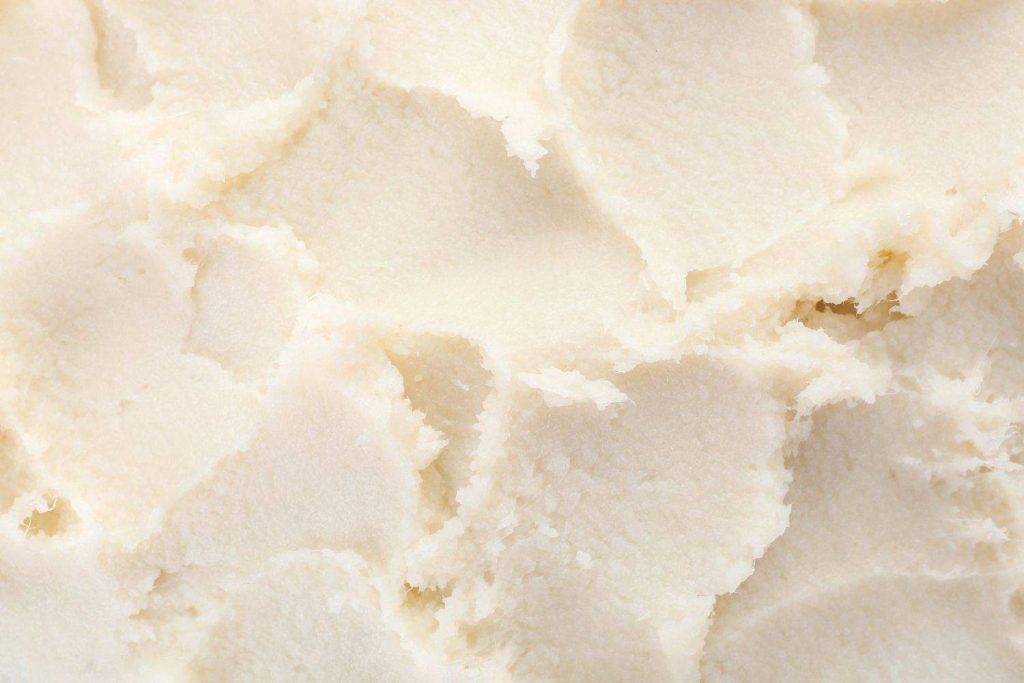
The comedogenic scale simply measures how likely a product or ingredient will clog pores. Here is the comedogenicity scale:
The comedogenic scale ranges from 0-5.
0- Does not clog pores
1- Low chance of clogging pores
2- Moderately low chance of clogging pores
3- Moderate chance of clogging pores
4- Fairly high chance of clogging pores
5- High chance of clogging pores
In general, anything that’s rated 0-2 should be fine to use and shouldn’t cause any major issues. The big thing for acne-prone skin is to be cautious with anything rated a 4 or 5.
However, it’s important to note that just because a product has a low comedogenicity rating, does not mean it won’t clog pores or cause breakouts. And vice versa, just because a product or ingredient has a high comedogenicity rating, does not mean it will clog pores or lead to acne.
What Is Shea Butter Comedogenic Rating?
So is shea butter comedogenic? Shea butter is rated 0 on the comedogenicity scale, which means it does not clog pores. However, there are known issues with the comedogenicity scale because it was developed using rats, and since human skin is different than rat skin, the reactions can be totally different.
Additionally, the comedogenic scale is just a guide. Just because something is rated a 0 doesn’t mean it won’t cause clogged pores and acne. And just because something is rated a 5 doesn’t mean it will. So just use it as a general guide.
How Comedogenic Is Shea Butter?
Since shea butter is rated 0 on the comedogenicity scale, it’s not very comedogenic. It’s unlikely that shea butter will clog your pores. However, due to its fatty acid profile composition we discussed earlier, there is still potential that shea butter will clog pores and cause acne.
Does Shea Butter Clog Pores? Does Shea Butter Cause Acne?
So is shea butter comedogenic?
Shea butter has a comedogenicity rating of 0, meaning shea butter is non-comedogenic. While you may be surprised that it’s rated as non-pore clogging, given its thick and rich texture, shea butter should still be used cautiously if you have oily or acne-prone skin.
While various ingredient checkers rate shea butter a little differently (0 and 1) , for the most part shea butter seems to be relatively non-comedogenic.
However, it’s important to dive a little deeper to get to the truth about shea butter and clogged pores.
Related post: Can Argan Oil Clog Your Pores?
Shea Butter Fatty Acid Composition Profile
The fatty acid profile in oils and butters is extremely important when looking at the likelihood of the product being comedogenic.
In general, linoleic acid is better for oily and acne-prone skin types and can actually help treat acne. This is because oily and acne-prone skin generally have lower levels in linoleic acid in the skin, so supplementing the fatty acid with oils and butters can be beneficial. Oleic acid is best used for drier skin and can lead to clogged pores and acne.
Fatty acid composition of shea butter can vary slightly depending on the source, but here are the general numbers:
Oleic acid- 45-50%
Stearic Acid- 40-45%
Linoleic acid- 5-8%
As you can see, oleic and stearic acids make up the bulk of the fatty acid content in shea butter. There are only very small amounts of linoleic acid, which can be a problem for oily and acne-prone skin. It has been found that oleic acid clogs pores.
So, while shea butter is rated as non-comedogenic, it certainly has the ability to clog pores because of its high concentration of oleic acid. It’s also been found that oleic acid can cause certain acne-causing bacteria to grow. Additionally, it has been found that linoleic acid can actually treat clogged pores and acne.
Even if you are using other kinds of shea butter like raw, organic, yellow, refined or unrefined, it will still have relatively the same composition.
So, does shea butter clog pores on face? The bottom line is yes, shea butter can clog pores and hair follicles. But does that mean shea butter won’t work for you? Absolutely not! Many people with oily and acne prone skin can use shea butter with no problems.
Related post: Does Cocoa Butter Clog Pores?
How Can Shea Butter Clog Pores?
So does shea butter really clog pores? It’s no guarantee that shea butter will block your pores, but it is a possibility.
So since shea butter is rated as non-comedogenic, why does shea butter clog pores? While it’s a 0 on the comedogenic scale, its fatty acid profile certainly raises a little concern, especially for those who are acne-prone.
Shea butter is thick and heavy, which can lead to clogged pores, especially for those with oily and acne-prone skin. Using ingredients that are too heavy can lead to breakouts and acne.
And since shea butter is high in stearic and oleic acids, which are known to clog pores, there’s a good chance shea butter can cause clogged pores and acne.
Related post: Will Almond Oil Clog Pores?
How To Avoid Clogged Pores
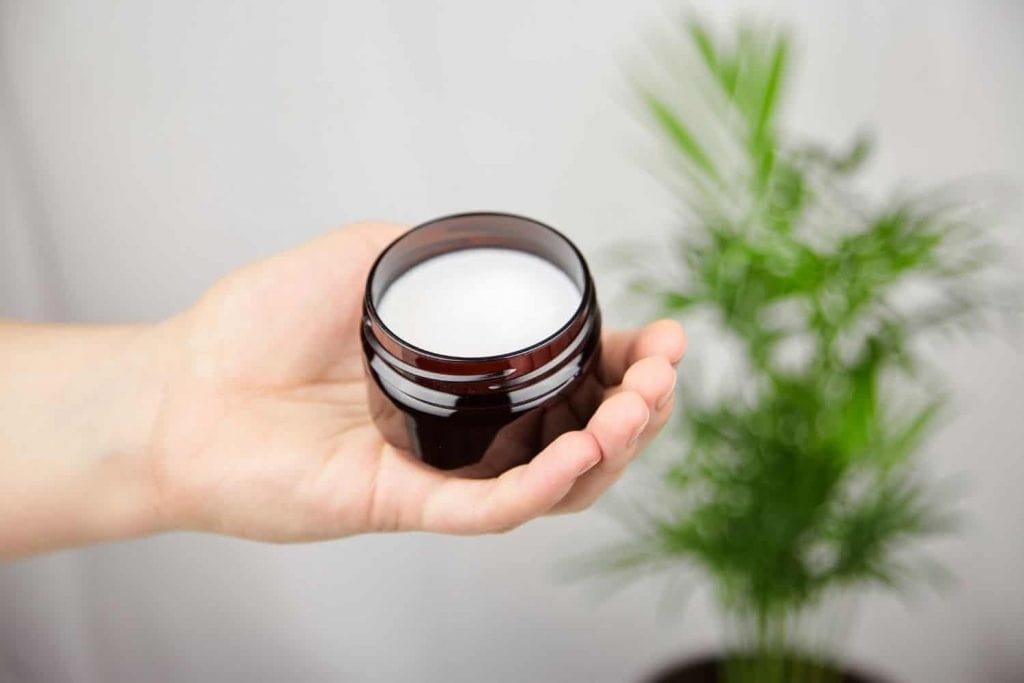
To avoid clogged pores, it’s important to patch test products so that in case you do have a reaction, it’s only on a small part of your face, instead of having clogged pores or acne all over.
It also helps to keep your skin clean, so be sure you are washing your skin 1-2x a day with a gentle cleanser. Be sure you are removing all your makeup, too.
You’ll also need a chemical exfoliants like AHA or BHA which work to shed dead skin cells and unclog pores.
Shea Butter Alternatives For Acne-Prone Skin
While shea butter is a great moisturizer, it’s not for everyone. So whether you’ve tried shea butter and experienced clogged pores and breakouts or you’re too afraid to give it a try, there are some other ingredients with less chance of clogging pores.
When looking for alternatives to shea butter, your best bet will be with plant oils. Look for oils high in linoleic acid, as they’ve been proven to help treat and prevent clogged pores and acne.
- Rosehip oil: a “dry oil” meaning it’s very lightweight and sinks into the skin quickly. Great for hyperpigmentation, anti-aging and acne.
- Chia seed oil: high in omega fatty acids which help to moisturize the skin and keep the skin barrier strong and healthy. It’s also rich in vitamins, minerals and antioxidants making it an all around great oil for skin health
- Evening primrose oil: a great, lightweight oil for oily and acne-prone skin that helps to address texture issues, acne and hyperpigmentation. Its high concentration linoleic acid help to keep the skin barrier strong and healthy while balancing oil production
- Grapeseed oil: a facial oil that’s hydrating and moisturizing while still being lightweight enough for oily skin. It helps to smooth skin texture, even skin tone and reduce fine lines and wrinkles.
- Passionfruit seed oil (maracuja oil): an oil rich in anti-inflammatory properties and vitamins. It can help with inflammatory skin conditions like acne, eczema, rosacea and psoriasis. It also has antibacterial properties and can help treat acne by killing bacteria on the skin. It’s very lightweight and works perfectly with or on top of moisturizers.
- Safflower oil: a non-greasy oil that absorbs quickly into the skin while providing hydration and nutrients to the skin. It helps to balance out oil production in the skin while protecting the skin against damage thanks to its antioxidant properties. It can also help with acne and other skin conditions because it has anti-inflammatory properties
- Sunflower seed oil: similar to safflower oil, sunflower seed oil can help reduce inflammation, kill bacteria, prevent premature aging and protect the skin from water loss. Sunflower seed oil has lots of antioxidant properties to help keep the skin protected from environmental damage.
Does Shea Butter Clog Pores FAQ’s
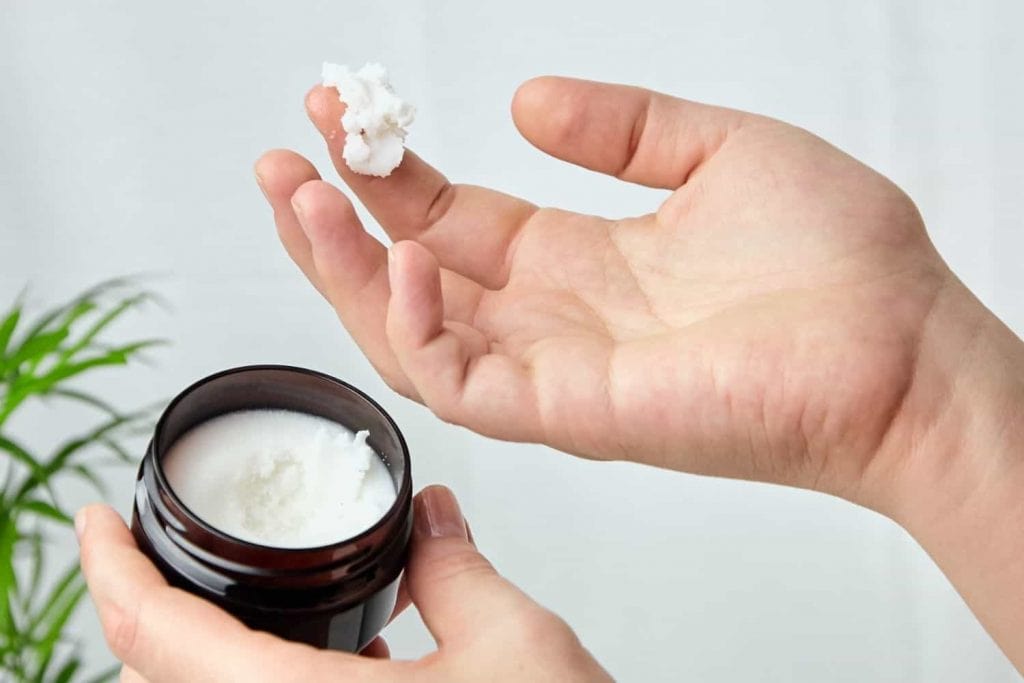
Does raw shea butter clog pores?
Raw shea butter has the same fatty acid profile and comedogenicity rating as refined shea butter, so yes it still has the potential to clog pores.
Does shea butter clear acne?
While shea butter does have some great anti-inflammatory properties that may help reduce inflammation associated with acne, it can also lead to acne because of its high concentration of oleic acid. Shea butter has not been shown to treat or clear up acne.
Can shea butter cause breakouts?
Yes, shea butter can certainly cause breakouts in some people. Because of its high concentration of oleic acid, it can lead to clogged pores and an overgrowth of acne-causing bacteria, leading to more breakouts.
Is shea butter good for acne?
While shea butter has some incredible properties that nourish and moisturize the skin, it doesn’t necessarily treat or prevent acne. Although keeping skin moisturized can strengthen the skin barrier and indirectly help with acne, shea butter doesn’t have any properties that make it good for treating breakouts. And because of its composition, it can even make acne worse.
Does shea butter clog pores on legs?
While shea butter can lead to clogged pores and acne, many people can use shea butter on their legs or body without any issues. The skin on our body is very different than that on our face. It’s tougher and less sensitive. If you use body lotions or moisturizing body washes, chances are you are already using shea butter!
Can I use shea butter on my face?
You can use shea butter on your face to help protect the skin, nourish and moisturize it. Shea butter makes a great moisturizer even during the day.
Is shea butter okay for acne prone skin?
While shea butter can be a great moisturizer, it’s best to use with caution if you have acne-prone or oily skin. Since there’s a good chance shea butter can clog pores and increase pimples, it’s a good idea to do a patch test.
Can raw shea butter clog pores?
Yep, raw shea butter can cause clogged pores and acne. No matter the type, refined vs unrefined shea butter, raw or processed, all shea butter can cause clogged pores.
Can African shea butter clog pores?
African shea butter is a natural, plant-based oil that has been used for centuries to moisturize and protect the skin. Shea butter is non-comedogenic, meaning it will not clog pores. In fact, shea butter can even help to reduce the appearance of pores by helping to regulate sebum production.
African shea butter is also rich in vitamins and essential fatty acids, making it an excellent choice for dry, sensitive, or acne-prone skin. So if you’re looking for a natural way to moisturize your skin without clogging your pores, African shea butter is a good option to consider.
Is shea butter OK for acne?
When it comes to acne, shea butter is often hailed as a natural miracle cure. And it’s true that this substance can have some benefits for your skin. Shea butter is a rich source of nutrients, including vitamins A and E, which can help to nourish and heal the skin. In addition, shea butter has anti-inflammatory properties that can help to reduce redness and swelling.
And since shea butter comedogenicity rating is 0, there’s a very low likelihood of shea butter causing clogged pores or breakouts.
Can I use shea butter on my face?
You might be surprised to learn that shea butter isn’t just for your body- it can actually be used on your face, too! Because shea butter is all-natural and packed with nutrients, it’s a great option for those with sensitive and dry skin. In fact, shea butter has been shown to help reduce inflammation and redness. It can also be used to help heal scars and other blemishes.
And since shea butter is non comedogenic, it can be used by all skin types including oily and acne prone skin.
Does Shea Butter Clog Hair Follicles?
Shea butter is commonly used all over the body to moisturize and nourish the skin. And since it’s commonly found in many moisturizers, creams and other skincare products, many people may experience clogged pores, clogged hair follicles and other issues when using shea butter on the body.
Does shea butter clog pores on legs or does shea butter clog hair follicles? Short answer, yes, shea butter can clog pores on legs and clog hair follicles.
While everyone’s skin is different, and many people can use shea butter on their face and body with no issues, others may experience increased breakouts, clogged pores and hair follicles.
Does Shea Butter Increase Pimples?
Many people hear about the amazing benefits of shea butter for the skin, but will shea butter cause acne or is it safe for acne-prone skin?
In short, shea butter can increase pimples because of its high concentration of fatty acids that are known to clog pores and promote the growth of acne causing bacteria. So if you’ve recently started using a product with shea butter and have noticed increased clogged pores or acne, there’s a good chance it’s because of the shea butter.
Related post: Does Jojoba Oil Clog Your Pores?
Does Shea Butter Clog Pores: Wrap Up
Can shea butter clog pores? Shea butter is a great moisturizer that can be used on your face or body, but it can clog pores in some people and lead to increased pimples, acne and active breakouts. Because of its levels of oleic and stearic acids, there’s a good chance that shea butter will clog pores. These acids have been shown to cause clogged pores and even help promote the growth of acne causing bacteria.
Will shea butter clog pores? Like anything with skincare, whether or not shea butter will clog pores and cause acne will be different for everyone. That’s why it’s important to patch test products, especially if you are acne-prone. Shea butter can certainly increase pimples, but it’s also been used for centuries to keep skin moisturized without issues.
Related To Does Shea Butter Cause Clogged Pores?
- Marula Oil Vs Rosehip Seed Oil
- Does Hyaluronic Acid Help With Acne?
- Does Olive Oil Clog Pores?
- Is Castor Oil Comedogenic?
- Cetaphil Or Aveeno: Which One Is Best?
